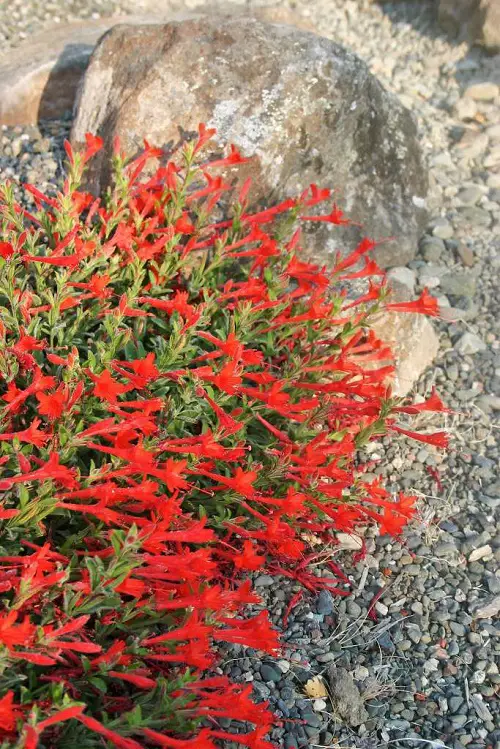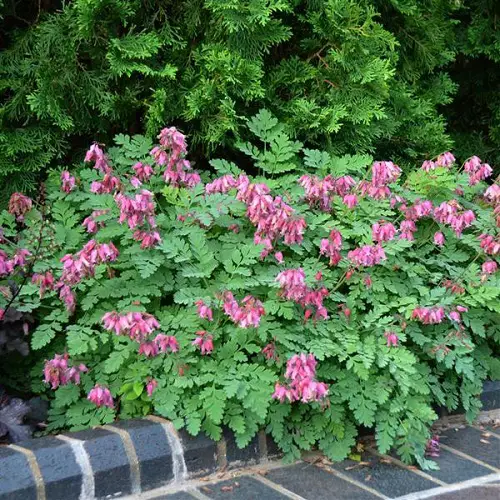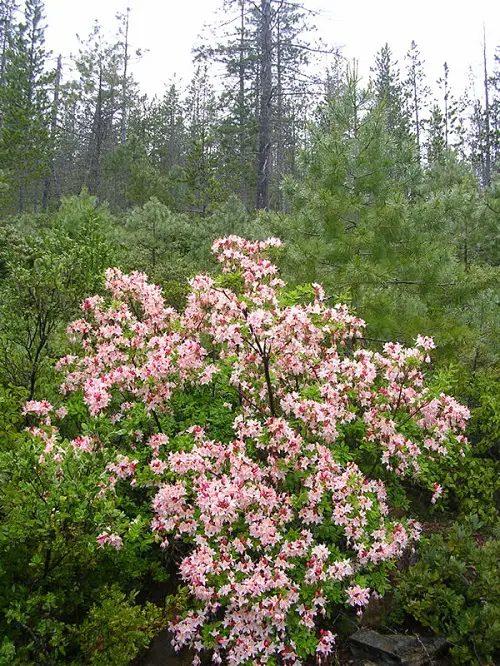If you live in Cali, you must grow these California Native Shade Plants! They’ll grow without much care and uplift your lawn.
Looking for California Native Shade Plants? You’ve come to the right place. Read on and find out the best varieties that you can grow in a shaded place without the worry of them dying or wilting.
Best California’s Native Shade Plants
1. Western Columbine
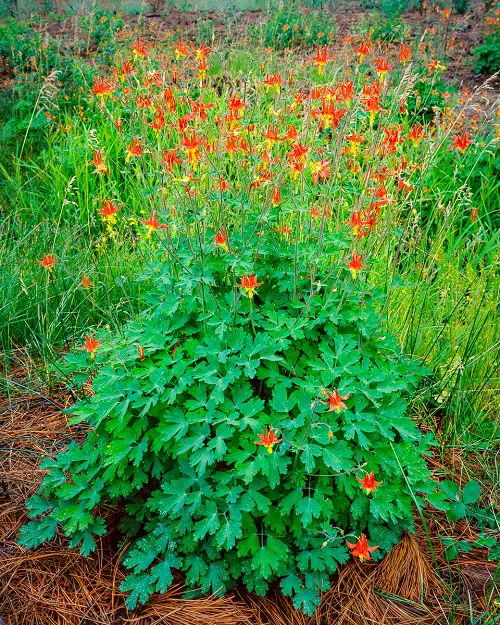
Botanical Name: Aquilegia formosa
USDA Zones: 3-8
Western Columbine is an excellent choice for shaded areas that will attract hummingbirds and butterflies with its flowers that look like hanging lanterns.
2. California Fuchsia
Botanical Name: Epilobium canum
USDA Zones: 7-10
California Fuchsia is a beautiful flowering perennial. It reaches about 1-2 feet in height and has lovely gray-green foliage and red, orange, or pink flowers.
3. Western Bleeding Heart
Botanical Name: Dicentra formosa
USDA Zones: 3-8
The Western Bleeding Heart is a California native that doesn’t need much care. Just give it partial shade and compost from time to time and it will thrive.
4. Redwood Sorrel

Botanical Name: Oxalis oregana
USDA Zones: 7-9
Redwood Sorrel is a pretty little plant that makes an excellent shade ground cover. You can also consume its foliage–it’s lemony and a bit sour. And who wouldn’t want such nice pink flowers?
5. Pacific Coast Iris
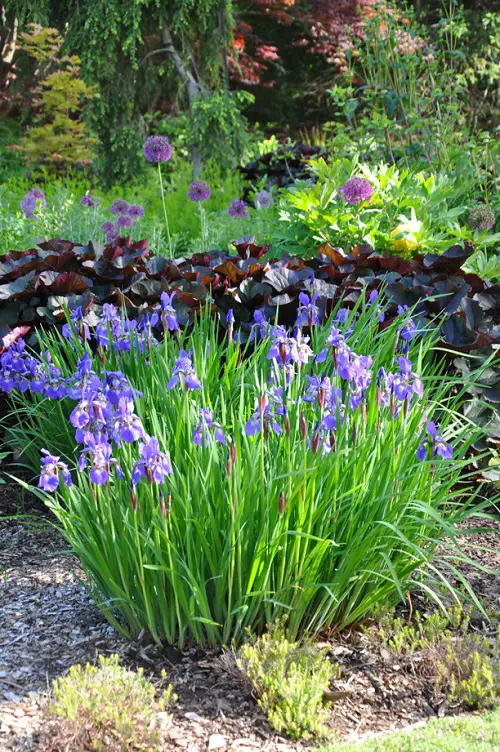
Botanical Name: Iris douglasiana
USDA Zones: 6-10
Pacific Coast Irises are mostly dwarf in size and don’t grow more than 2 feet in height. They come in many pretty colors, and some even have patterns and veining. They’re really low maintenance once established.
6. Red Fescue
Botanical Name: Festuca rubra
USDA Zones: 3-8
Red Fescue is a shade-loving grass that’s native to California. It is a cool season grass that makes a great ornamental plant. Plus, it has a fine texture and is resistant to drought.
7. California Hazel
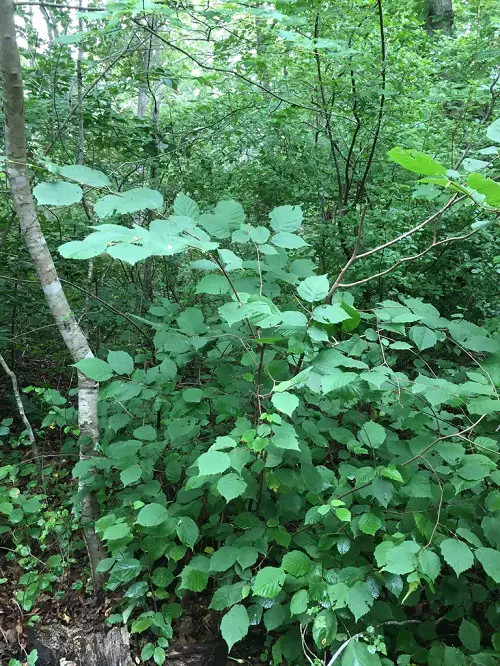
Botanical Name: Corylus cornuta var. californica
USDA Zones: 4-8
California Hazel is a small tree with edible nuts that wildlife loves. It want a garden that’s full of flora and fauna, you should definitely plant this.
8. Western Azalea
Botanical Name: Rhododendron occidentale
USDA Zones: 7-9
Western Azaleas are evergreen shrubs that can grow 6-10 feet tall. They also have showy flowers that bloom from March to May with red, orange, pink, and white shades.
9. Western Sword Fern
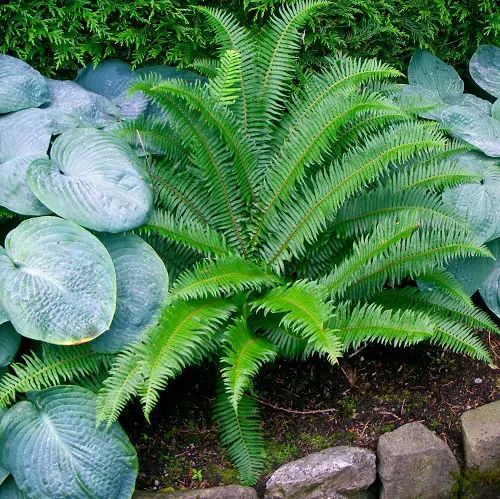
Botanical Name: Polystichum munitum
USDA Zones: 5-9
If you’re a fan of ferns and need one that thrives in shade, this Californian native might be perfect. It can adapt to different conditions and has stunning arching fronds.
10. California Wax Myrtle

Botanical Name: Myrica californica
USDA Zones: 7-10
California Wax Myrtles are small trees or shrubs with glossy green foliage that give off a sweet smell. The plant also has attractive berries and makes a lovely landscaping choice.
11. Evergreen Huckleberry
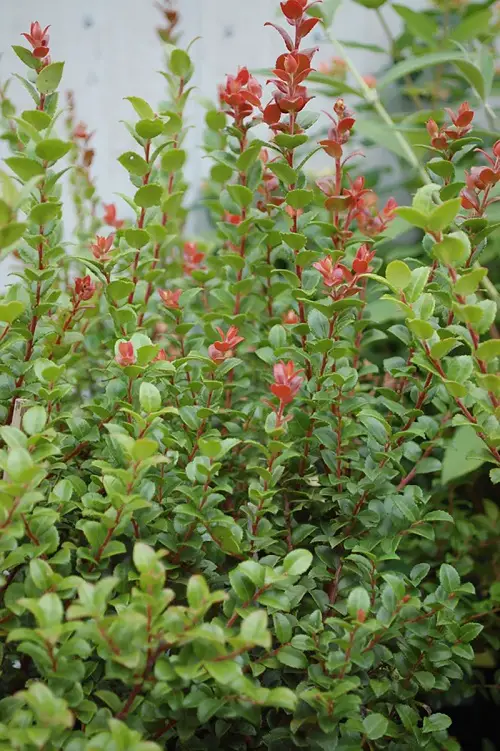
Botanical Name: Vaccinium ovatum
USDA Zones: 7-9
Evergreen Huckleberry has year-round evergreen foliage and showy flowers of a creamy pink color that look like tiny urns. It also has black-purple berries that birds love. You can eat these as well.
12. Western Spicebush
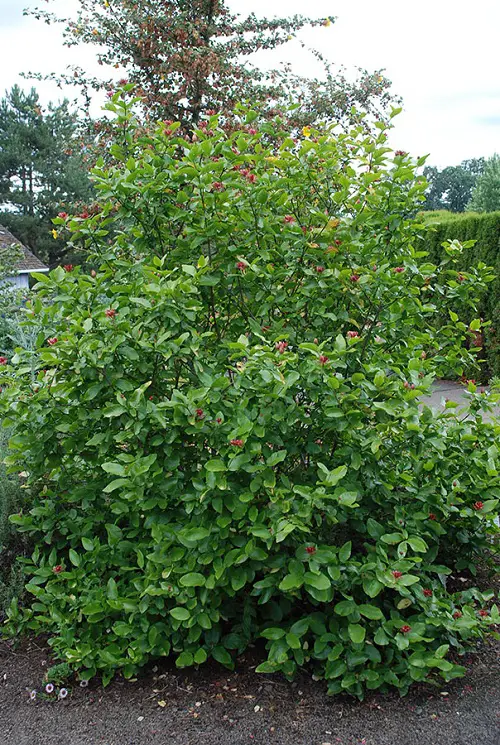
Botanical Name: Calycanthus occidentalis
USDA Zones: 7-9
Western Spicebushes are famous for their maroon flowers and spicy scented leaves in California. These shade plants can grow 10-12 feet tall and need little care. You will also find beetles living on these.
13. Bishop’s Hat

Botanical Name: Epimedium spp.
USDA Zones: 5-9
Bishop’s Hat plants have heart-shaped leaves and tiny spring flowers. There are over 60 species of these available but the best ones are Sweetheart, Frohnleiten, and Warburg’s Ruby.
14. California Wild Ginger
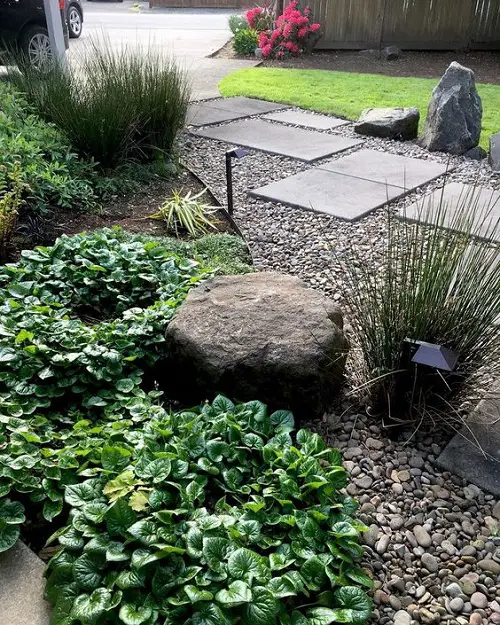
Botanical Name: Asarum caudatum
USDA Zones: 7-10
California Wild Ginger has hairy, cup-shaped flowers and is a low-growing groundcover, only reaching a foot in height. It’s also deer resistant and gives off a gingery scent.
15. California Bay Laurel
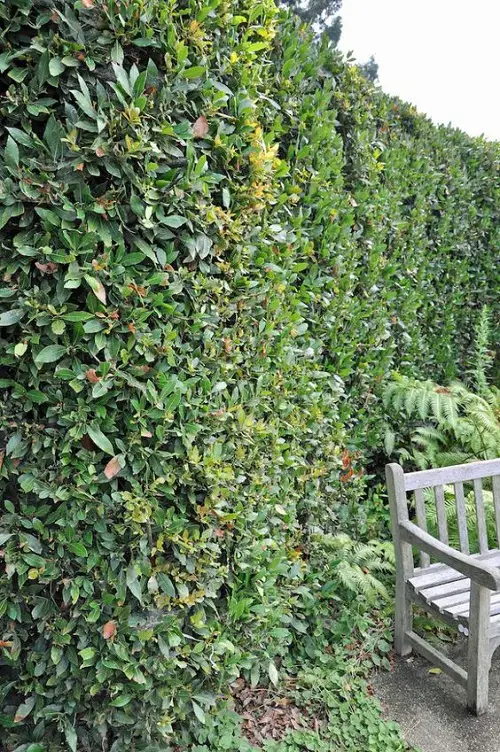
Botanical Name: Umbellularia californica
USDA Zones: 8-10
The California Bay Laurel trees are native to the coastal forests of California and thrive in shade. The leaves of these trees have a strong, peppery flavor that can be used fresh or dried in many recipes.
16. Deer Fern
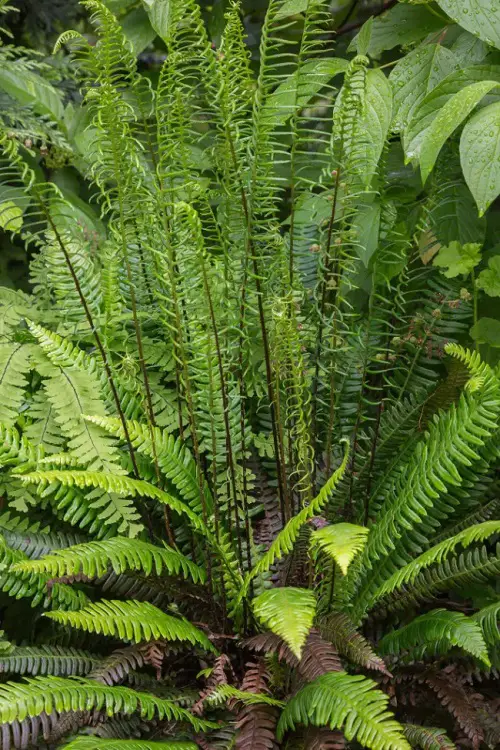
Botanical Name: Blechnum spicant
USDA Zones: 5-9
Deer Ferns are native to Europe, Western Asia, and North America. They’re prominent in California and have flat, wavy-margined leaflets. It has a unique upright, clumping growth habit.
17. Coast Silk Tassel
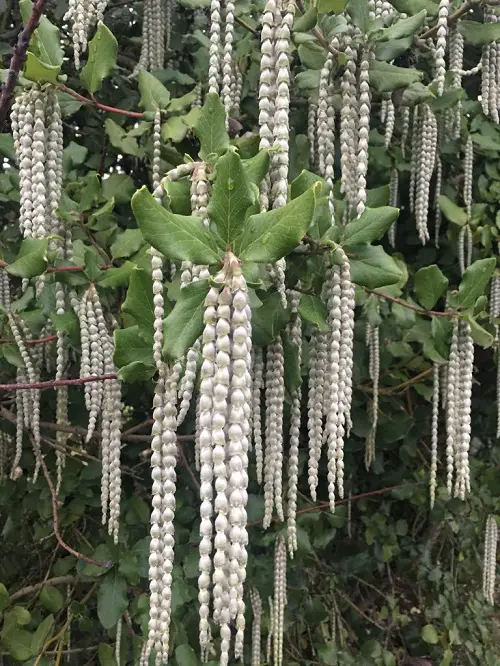
Botanical Name: Garrya elliptica
USDA Zones: 7-10
Coast Silk Tassels look like they’re straight out of a movie. These shade plants native to Oregon and California have long, showy catkins that bloom in spring.
18. Western Trillium
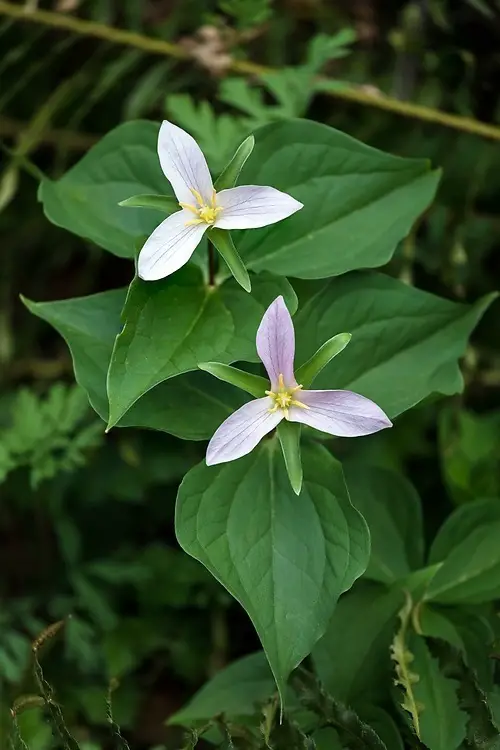
Botanical Name: Trillium ovatum
USDA Zones: 4-8
Western Trillium have flowers made up of three large white petals and have broad, ovate-shaped leaves. These plants thrive in shade and can be easily multiplied by the division of rhizomes.
19. Western Wild Ginger

Botanical Name: Asarum caudatum
USDA Zones: 4-9
Western Wild Ginger plants have shiny, heart-shaped (or kidney-shaped) leaves that form dense carpets as the rhizomes spread. They also give gorgeous flowers in late spring and early summer.
20. Western Dogwood

Botanical Name: Cornus nuttallii
USDA Zones: 7-9
Western Dogwood trees have large white flower clusters with bright green leaves. The leaves turn red, orange, and purple in fall and also give bright pink-red berries in late summer.
21. Sierra Iris
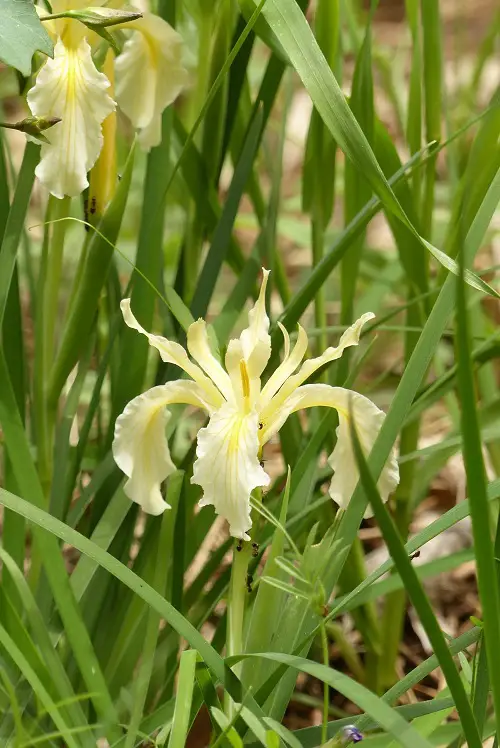
Botanical Name: Iris hartwegii
USDA Zones: 5-9
Sierra Iris is another California native that thrives in shade. It has nice lavender or yellow flowers and doesn’t grow more than a foot and a half tall.
22. Coffeeberry
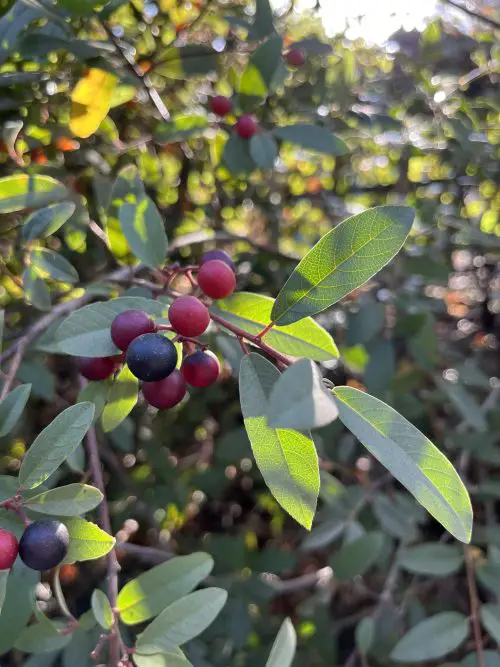
Botanical Name: Frangula californica
USDA Zones: 7-10
Coffeeberry is a great choice for a shady hedge or screen as it can grow up to 15 feet tall and nearly 10 feet wide. Plus, it produces small black berries that birds love.
23. Deer Grass
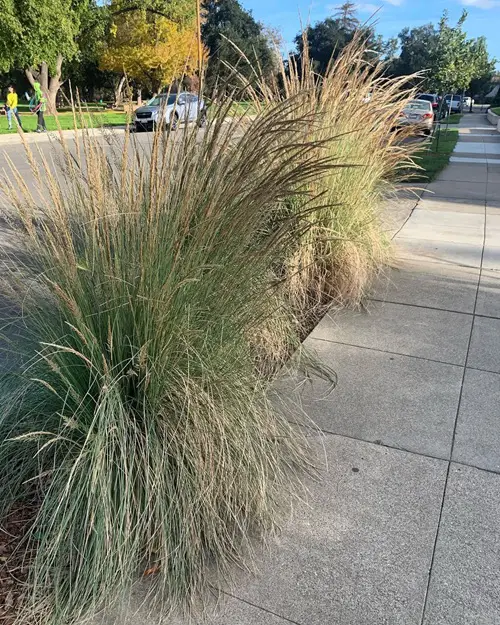
Botanical Name: Muhlenbergia rigens
USDA Zones: 7-10
Deer Grass is an ornamental one that thrives in shady spots. It also changes colors. It’s green in the summer and turns a pretty golden brown when fall arrives. Deer Grass can also tolerate different soil conditions.


